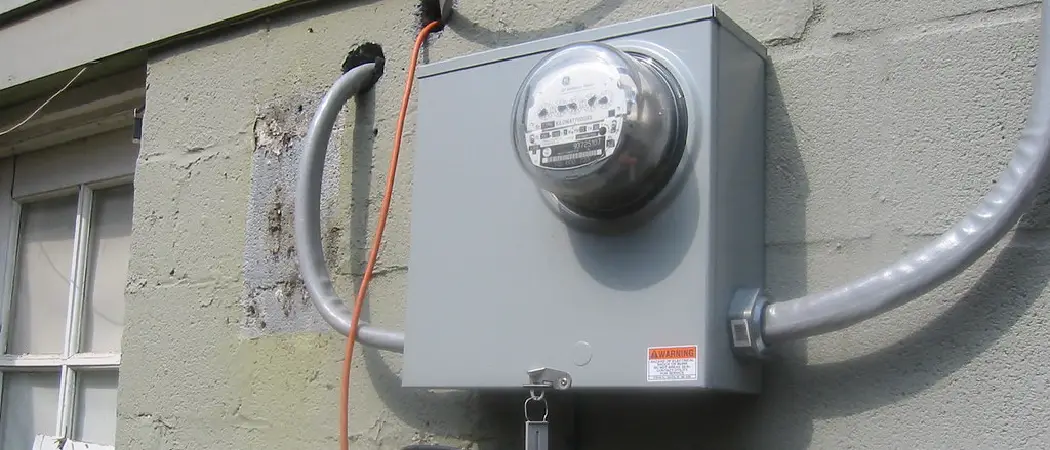Are you looking to run an extension cord through a wall and are unsure of the best way to do it? Look no further – this blog post is here to provide you with all the know-how to get your extension cord installed safely! With a few simple steps, we’ll have you on your way in no time.
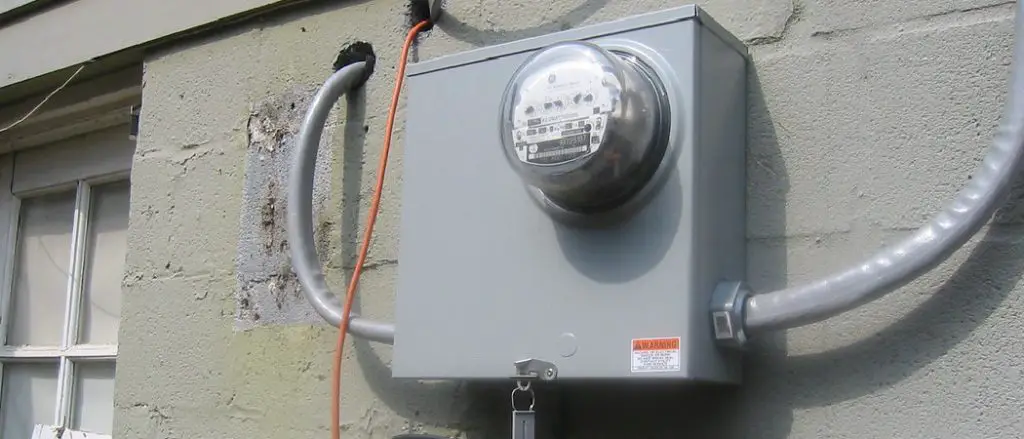
Running an extension cord through a wall can be daunting at first, but don’t worry – it’s not as intimidating as it seems when following reliable instructions. We will talk through some essential safety precautions and then discuss how to select the right materials for tackling this job efficiently.
Finally, step-by-step directions will be provided so that even novice DIYers can complete this project with confidence! So, let’s get started today learning how to run an extension cord through a wall!
Assessing the Situation
Determining Power Needs
The first step in running an extension cord through a wall is understanding your power needs. Identify the appliances or devices that require power through this cable. Are you running a television, sound system, computer, or a combination of these? Each device will have different power requirements, typically listed on their labels.
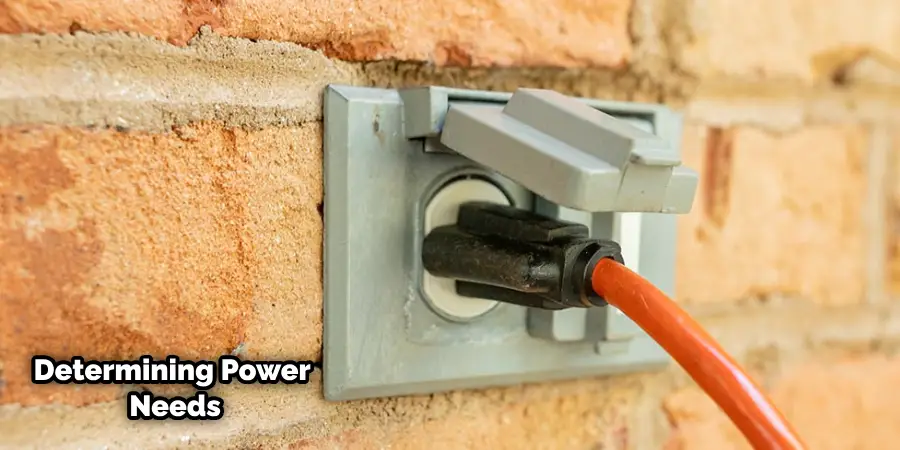
Next, calculate the total wattage and amperage of all your devices combined. This is essential information because it lets you know how much load your extension cord needs to handle. Be aware that consistently running an extension cord at its maximum capacity can lead to overheating and potential fire hazards. For safety reasons, it’s better to use an extension cord that can handle more than the calculated load.
Locating an Appropriate Power Source
Before you start drilling holes in your wall, it’s crucial to assess the existing electrical outlets in your home. Look for outlets that are not already burdened with multiple devices. Remember, overloading an outlet can lead to electrical problems. Also, inspect the condition of the outlets. If they appear worn or damaged, they might need to be replaced before safely using an extension cord.
Think about how close the power source is to your devices. Ideally, the outlet should be relatively close to reduce the amount of cable needed and thus minimize potential tripping hazards or unsightly cord clutter. The shorter the extension cord, the less chance there is for voltage drop, which can affect the performance of your devices. Lastly, consider the path of the extension cord. Avoid running the cord under rugs, through doorways, or anywhere it could get damaged or cause a hazard.
Choosing the Right Extension Cord
Selecting the Correct Gauge
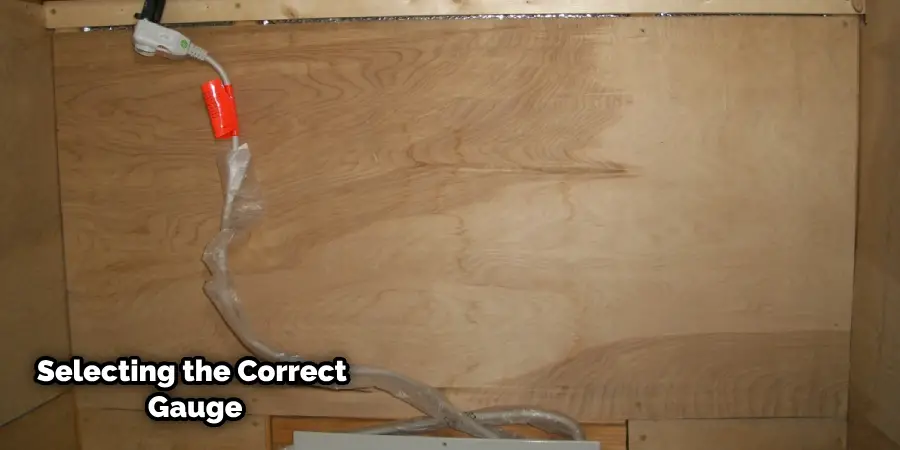
Wire gauge refers to the diameter of the wire, and it’s crucial in determining how much electrical current a cord can safely carry. The tricky part is that the higher the gauge number, the thinner the wire. For instance, a 16-gauge wire is thinner than a 12-gauge wire. Thicker wires can carry more current without overheating, making them suitable for devices that have higher power requirements. To match the extension cord gauge to your power needs, check the amperage rating of your devices and choose a cord rated for the combined total or more.
Length Considerations
When it comes to the length of your extension cord, less is more. A longer cord can lead to a voltage drop, which might affect the performance of your devices. Therefore, it’s crucial to avoid using an excessively long extension cord. Calculate the straight-line distance between your device and the power source, then add a few extra feet for a bit of flexibility. This will help you determine the necessary length of your extension cord without risking voltage drop or creating a potential trip hazard.
Gathering Necessary Tools and Materials
Now that you have assessed your power needs and located a suitable power source, it’s time to gather the materials needed to run your extension cord through the wall. Here are the essential tools and materials you’ll need:
- Electrical tape
- Wire cutter/stripper
- Drywall saw or drill with a hole-cutting attachment
- Fish tape or coat hanger (for fishing the cord through)
- Extension cord (rated for your power needs and length determined by previous calculations)
- Mounting hardware (if desired)
Step-by-Step Directions on How to Run an Extension Cord Through a Wall
Now that you have everything prepared let’s go through the steps of running an extension cord through a wall.
Step 1: Turn off the Power
Before starting any electrical work, it’s crucial to turn off the power at the circuit breaker. This will ensure your safety and prevent any potential accidents.
Step 2: Cut a Hole in the Wall
Using your drywall saw or drill with a hole-cutting attachment, cut a small hole (about 1 inch in diameter) in the wall where you want to run the extension cord through.
Step 3: Fish the Cord Through
Take your fish tape or coat hanger and insert it into the hole. Then, use it to guide the extension cord from one end to the other. This may take some patience and maneuvering, but eventually, you will be able to pull the entire cord through.
Step 4: Secure the Cord
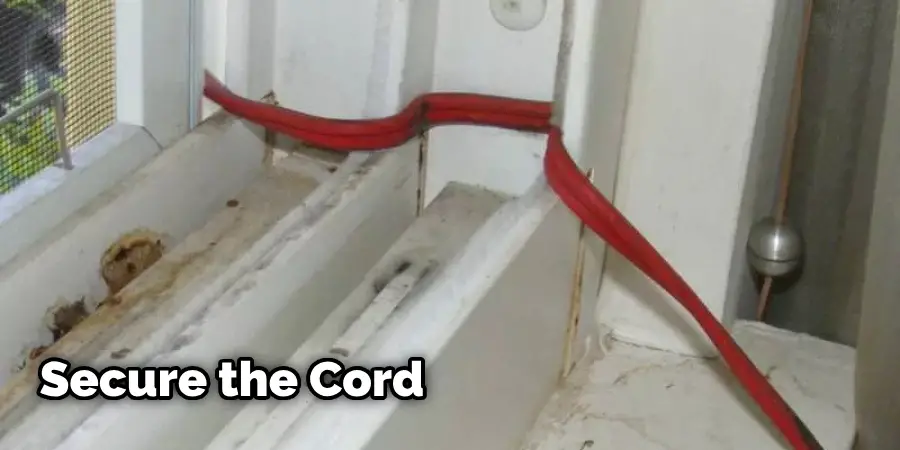
Once the cord is fished through, use electrical tape to secure it to the wall near the hole and at any other points where necessary.
Step 5: Mounting (Optional)
If desired, you can mount your extension cord using mounting hardware for a clean and organized look. Make sure to follow the manufacturer’s instructions when doing so.
Step 6: Plug in Your Devices
Finally, plug in your devices to the extension cord and turn on the power at the circuit breaker. Test each device to make sure they are receiving sufficient power and functioning correctly.
Troubleshooting 6 Common Issues
1. Voltage Drop
If you experience a decrease in performance or your devices are not receiving enough power, it could be due to a voltage drop. To fix this issue, try using a shorter extension cord with a thicker gauge wire.
2. Overloading an Outlet
When too many devices are plugged into one outlet, it can lead to electrical problems. To avoid this, distribute your devices evenly between multiple outlets or consider using a power strip instead.
3. Damaged Extension Cord
If your extension cord appears worn or damaged, it’s crucial to replace it immediately for safety reasons. Using a damaged cord can lead to electrical hazards and potential accidents.
4. Tripping Hazards
Make sure to secure your extension cord to the wall or floor to prevent it from becoming a tripping hazard. You can use electrical tape, mounting hardware, or even cover the cord with a rug.
5. Interference
If you notice any interference in your devices while using an extension cord, it could be due to electromagnetic interference (EMI). This is often caused by using low-quality cords or running them near other electronic devices. To fix this issue, try using a higher-quality extension cord with better shielding or keep it away from other electronics.
6. Cord Clutter
To prevent unsightly cord clutter, consider using cable clips or wraps to organize and secure your extension cords along walls or furniture. This will not only improve the appearance of your space but also prevent any potential safety hazards.
Alternative Solutions
A. Exploring Wireless Power Options
1. Use of Wireless Chargers and Power Hubs
With the advancement of technology, we can now power our devices wirelessly, reducing the need for cords and cables. Wireless chargers and power hubs use magnetic induction to transfer energy, enabling you to place your device on a pad or within a specified range for charging.
2. Pros and Cons of Wireless Solutions
Wireless power options eliminate the risks associated with cord clutter and tripping hazards, offering a cleaner and safer alternative to extension cords. They also provide the convenience of charging multiple devices simultaneously. However, wireless chargers generally have slower charging times compared to wired options and are dependent on compatible device technology. Additionally, they are typically more expensive and still require a power source for the charger or hub itself, which could still necessitate cord management.
B. Considerations for Relocating Devices or Rearranging Furniture
1. Room Layout Changes
Sometimes, a simple change in your room layout can eliminate the need for an extension cord. Consider relocating devices closer to outlets or rearranging furniture to create a pathway for cords that avoids high-traffic areas. This can reduce the risk of accidents and cord damage without the need for additional equipment or installations.
2. Permanent Wiring Options
For high-use areas, exploring permanent wiring options could be a viable solution. This might involve installing additional outlets or running concealed conduits to provide power where it’s needed. While this solution requires more upfront work and cost, it offers a long-term, safer, and visually pleasing solution to power distribution in your living or working space.
Tips for Minimizing Energy Consumption and Being Environmentally Conscious
- Unplug devices when not in use to avoid vampire power consumption.
- Invest in energy-efficient devices and appliances that consume less electricity.
- Use a surge protector instead of plugging multiple devices into separate outlets, which can save energy and protect against power surges.
- Consider using natural light during the day or switch to LED lights for better energy efficiency.
- Regularly maintain and clean devices to ensure they are functioning at their optimal energy consumption levels.
- Look for devices with automatic shut-off features, such as timers or motion sensors, to reduce unnecessary energy use.
Conclusion
In conclusion, managing and distributing power in your living or workspace doesn’t have to be a daunting task. With the right tools and methods, you can easily run extension cords, troubleshoot common issues, and even explore alternatives like wireless power options or room layout changes.
Moreover, it’s essential to remain conscious of your energy consumption and find ways to reduce wastage, not only for the sake of your utility bills but also for the betterment of our environment.
So, whether you’re setting up a home office, organizing your gaming rig, or just trying to charge multiple devices simultaneously, these tips and solutions can guide you to a safer and more efficient power management setup. Thanks for reading this blog post about how to run an extension cord through a wall.

